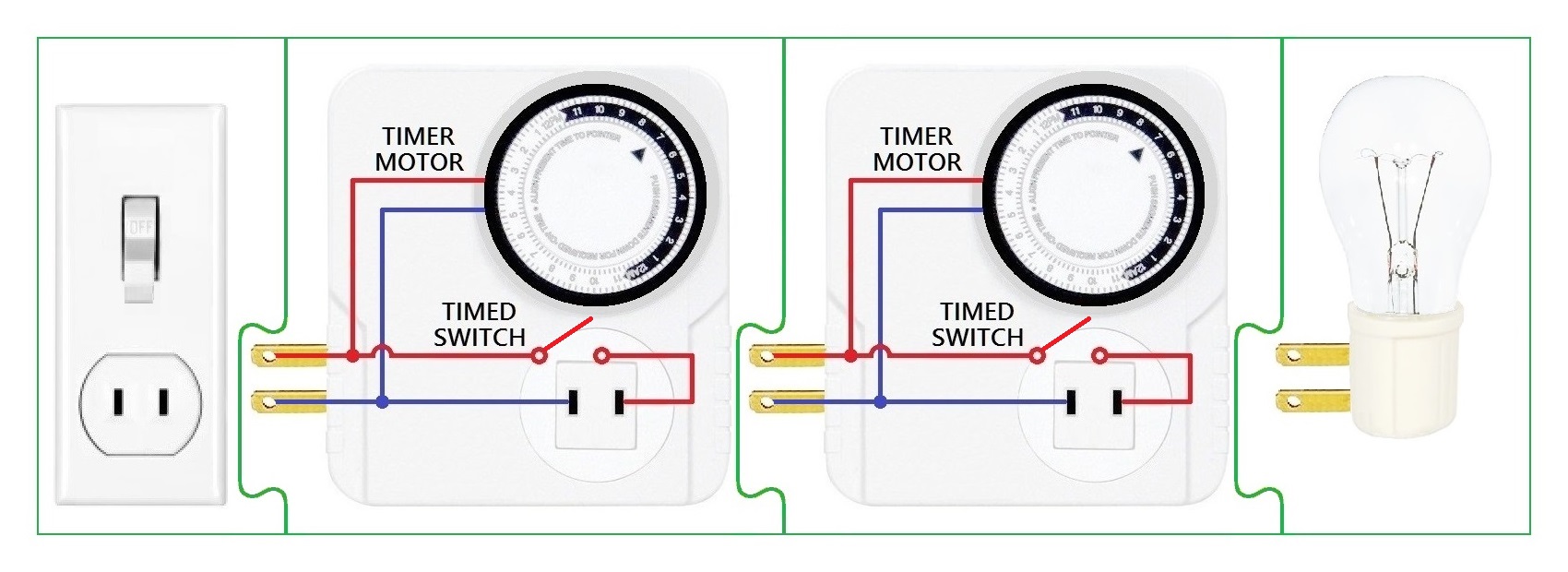
Two motorized 24-hour [light timers](https://en.wikipedia.org/wiki/Time_switch) are [daisy chained](https://en.wikipedia.org/wiki/Daisy_chain_%28electrical_engineering%29) between a power outlet and a light bulb.
For these timers, devise schedules and choose initial times that produce the following repeated 9-hour lighting pattern, with the largest possible whole number $d$ less than 9, beginning when the outlet's power is switched on.
Light is on for $\:d~$ hours,$~$ off for $\,9\,$–$\:d~~$ hours,
on for $\:d~$ hours,$~$ off for $\,9\,$–$\:d~~$ hours,
on for $\:d~$ hours,$~$ off for $\,9\,$–$\:d~~$ hours,
$~\,\vdots$
If you are unfamiliar with these timers
Each timer repeatedly cycles through
its schedule of 24 intervals that last an hour each.
•$~$ A circular dial determines the current point in the schedule
•$~$ A motor rotates the dial to advance through its schedule
whenever power is supplied to the timer
•$~$ You may initially set the dial to any minute of any interval
•$~$ You preset each interval to ON or OFF
•$~$ When the dial is in an interval that was set to ON,
the timer acts as a direct connection for power to flow
to whatever is plugged into the timer
•$~$ When the dial is in an interval that was set to OFF,
the timer does not provide a power connection
•$~$ The resulting ON and OFF durations could be fractions of an hour
if the timer is set to begin within an interval or
if incoming power is interrupted during an interval
The first timer is plugged into the outlet.
•$~$ It runs nonstop once the outlet is switched on
•$~$ It supplies power— but only when its dial is in
an ON interval — to the second timer
The second timer has the light bulb plugged into it.
•$~$ It advances through its schedule
only when the first timer supplies power
•$~$ It lights the bulb, but only while powered by
the first timer and when its dial is in an ON interval
Related puzzles
Halve time with two timersHalve time with two timers
Day and night of the two timersDay and night of the two timers
Third timer's a charmThird timer's a charm
